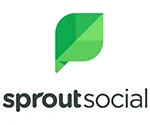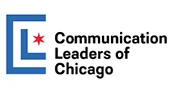 Jamie Kightley Jamie Kightley |
Over the course of 2023, almost all industries have been impacted by artificial intelligence. The AI market has risen to $100 billion, and the AI boom isn’t expected to slow down anytime soon, with the market predicted to reach $2 trillion by 2030. Much of the recent hype in the mainstream media has surrounded ChatGPT, but it’s important not to forget about more specific applications of the technology: from predictive maintenance in aviation to automatic scheduling optimization in service provision and fraud prevention in banking and mobile payments.
Even hardware is struggling to keep up with the AI boom. The global AI chip market is expected to generate nearly $305 billion by the end of the decade, according to a June Techstrong.ai report, boasting a compound annual growth rate of 29 percent from 2023 to 2030. Microsoft itself has gone on record warning of potential shortages of GPUs, which are critical to underpinning data centers that process AI-driven applications.
PR 5.0 is about to humanize the PR game
Like any new technology, AI is transforming many industries and has left marketing and PR professionals trying to adopt this generative technology into their work processes and understand its impact. According to a recent Prowly State of PR Technology report, for instance, 67.8 percent of PR professionals are already utilizing AI in their work and 52 percent are happy with their current PR tools including AI. But what do these new technologies mean for the future of marketing and PR professionals?
| This article is featured in O'Dwyer's November '23 Technology PR Magazine (view PDF version) |
Although Industry 5.0 is still an emerging approach, early understanding is that it’s not just the new technology, but a more encompassing approach to the use of technology in a societal environment. This is evidenced by the European Commission Policy Brief that set out its vision for Industry 5.0, “that aims beyond efficiency and productivity as the sole goals and reinforces the role and the contribution of industry to society.” It should complement the existing “Industry 4.0” approach by specifically putting research and innovation at the service of the transition to a sustainable, human-centric and resilient PR and marketing industry. The Industry 4.0 approach in PR and marketing was driven by digital communication and technologies and data-driven strategies, which took the industry away from its most powerful tool—the power of the human touch.
Consider what’s happened in the manufacturing sector, whereby by the end of 2022, 72 percent of manufacturers had pressed ahead with implementing Industry 4.0 and its driving technologies such as IIoT, AI, digital twins and more. Now, the pendulum has swung back towards the human factor in manufacturing operations with Industry 5.0. There’s a groundswell around Industry 5.0, particularly how to marry technology developments—including AI—to better complement the working environment of human workers and to support Environmental, Social and Governance initiatives.
Industry organizations have their say on humanized AI
PR and marketing players have been looking at the impact of AI in the sector for some time. A recent Cision webinar featured a panel of experts that assessed the use of AI in PR activity and highlighted its ability to shape strategy so often lacking in a PR agency’s repertoire. One of the main topics that the panel discussed was when to use AI and when not to use AI. The overall sentiment from the panel was that AI should be used to help prompt ideas and training over time to extract the correct data. But it shouldn’t be used for quantitative and contextualized inferences from trends.
HubSpot produced a report on AI Trends for Marketers to gauge the state of AI adoption across marketing and its CEO’s conclusions were in line with ours:
“AI will never replace human creativity and connection. Lived experiences and opinions will never be able to be generated by a machine, and an employee can’t be mentored and managed by AI … AI is a great tool for marketers to use, but would be useless without human knowledge, strategy, and implementation.”
Written by humans for humans
Buried within these reports are some eye-opening stats, none more so than Hubspot’s recent findings, which discovered that 48 percent of marketers’ top use for generative AI is for content creation. However, the most effective companies will continue to utilize industry pain points for their content creation and thought leadership. This can be reinforced by research which states that 72 percent of marketers see relevant content creation as the most effective SEO tactic, so focusing your content on hot topics and industry pain points will pique the interest of consumers the most.
There’s no doubt that AI is getting smarter and more creative, but its content creation often doesn’t have that personalized human element. The most effective content creation copies are from the perspective of a human with their views, written by a human with the acknowledgment that it must be fit for consumption by a human, so it must be around a topic that’s within the industry at that moment. This is where the main downfalls of ChatGPT and marketing speak for thought leadership come from, as a key element of true thought leadership is that it’s written from the perspective of industry experts and aimed at industry experts.
Industry 5.0’s hyper-personalization powers
One of Industry 5.0’s key elements is hyper-personalization and its ability to be tailored and targeted towards individual consumers. We’re seeing this reflected in B2B buyer behavior and the mental cues that are influencing the latest approaches to PR content creation and delivery. This is evident in a 2021 McKinsey survey, which found 71 percent of consumers expect a personalized experience and 61 percent are frustrated when they don’t have a personalized experience. This all points to the strengths that can be gained through adopting Industry 5.0 to utilize its hyper-personalization powers.
Mental cues can be identified by looking at key pain points within the target industry and how the product can resolve these issues. These mental cues need to be woven into all brand marketing for consistent messaging. Reinforcing the importance of cognitive resonance in the sale and buying process to become more recognized and trustworthy among consumers and get your organization’s message repeatedly trusted and valued.
When end-readers have personal experiences, such as those specific industry pain points or issues that come from a deep knowledge of their subject, they must be written from a human perspective to ensure they deliver for the consumer a personalized experience. And that’s before you factor in those experiences for earned media placements, where the copy will also have to get through a journalist’s eyes or their peer review committee. This level of personalization can’t be achieved by a robot—even if they’re trained with the words of an individual subject matter expert.
Future-proofing new generations for AI and PR 5.0
The AI boom is still unfolding, and its impact on future generations and the job market is yet to fully emerge. In many countries, AI and quantum computing are seen as key to establishing global tech capital. But, according to a recent Coursera report, the UK slid down the global skills proficiency ratings from 38th place last year to 64th place this year. This will only be replicated in other countries.
One thing is for sure: New technologies will continue to filter into the PR and marketing space, but for the foreseeable future, purchasing decisions will continue to be made by humans. PR 5.0 is coming, and the most prudent PR professionals and marketers will learn from the transition of 4.0 to 5.0 in other industries to ensure technology complements—not replaces—their content creation.
***
Jamie Kightley is Head of Client Services at IBA International, a B2B PR agency serving global technology clients.


 Thanks to advances in AI, social media has now taken a leading role in providing customer support services for brands, with adoption achieving noted fanfare among Gen Z consumers.
Thanks to advances in AI, social media has now taken a leading role in providing customer support services for brands, with adoption achieving noted fanfare among Gen Z consumers. Why universities must offer Communications Engineering degrees in the AI-driven world.
Why universities must offer Communications Engineering degrees in the AI-driven world. The Windy City is bullish on AI, according to a recent survey conducted by the Communications Leaders of Chicago in conjunction with DePaul University’s College of Communication.
The Windy City is bullish on AI, according to a recent survey conducted by the Communications Leaders of Chicago in conjunction with DePaul University’s College of Communication. The emergence of generative artificial intelligence (Gen AI) technology is a curveball that has the potential to significantly disrupt and erode voter trust in the media and governmental leadership.
The emergence of generative artificial intelligence (Gen AI) technology is a curveball that has the potential to significantly disrupt and erode voter trust in the media and governmental leadership. The process of conducting searches is being transformed by generative AI, which is now embedded within search engines such as Bing, Perplexity, and Google's Search Generative Experience.
The process of conducting searches is being transformed by generative AI, which is now embedded within search engines such as Bing, Perplexity, and Google's Search Generative Experience.


 Have a comment? Send it to
Have a comment? Send it to 
No comments have been submitted for this story yet.